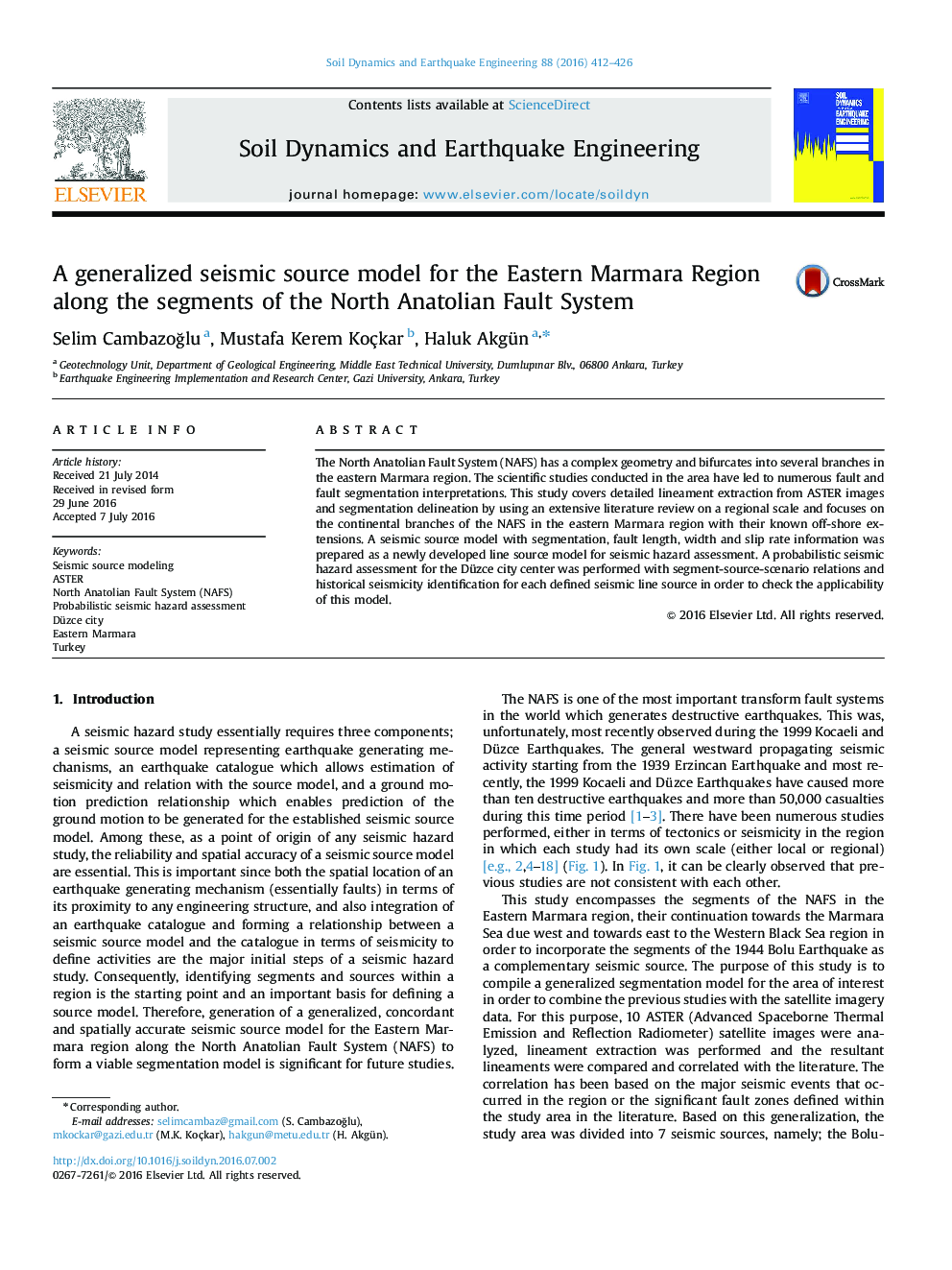| Article ID | Journal | Published Year | Pages | File Type |
|---|---|---|---|---|
| 303862 | Soil Dynamics and Earthquake Engineering | 2016 | 15 Pages |
•A newly generated general fault model for the Eastern Marmara region was formed.•Literature and satellite image interpretation was combined to prepare a source model.•The length, width and slip rate of each line segment was considered for the PSHA study.•The earthquake catalogue was checked for completeness and secondary events.•Alternative models with segment-source-weight relations were used for Düzce’s PSHA.
The North Anatolian Fault System (NAFS) has a complex geometry and bifurcates into several branches in the eastern Marmara region. The scientific studies conducted in the area have led to numerous fault and fault segmentation interpretations. This study covers detailed lineament extraction from ASTER images and segmentation delineation by using an extensive literature review on a regional scale and focuses on the continental branches of the NAFS in the eastern Marmara region with their known off-shore extensions. A seismic source model with segmentation, fault length, width and slip rate information was prepared as a newly developed line source model for seismic hazard assessment. A probabilistic seismic hazard assessment for the Düzce city center was performed with segment-source-scenario relations and historical seismicity identification for each defined seismic line source in order to check the applicability of this model.
